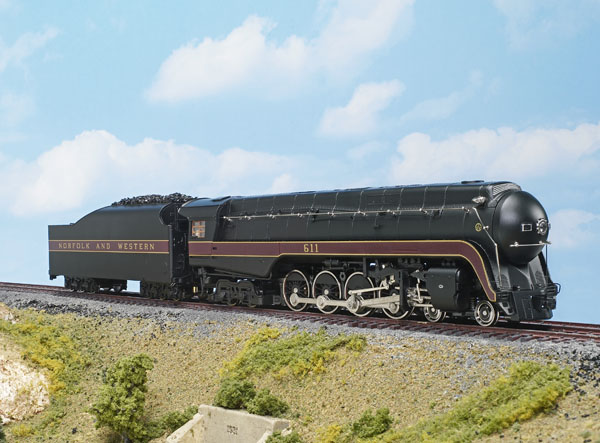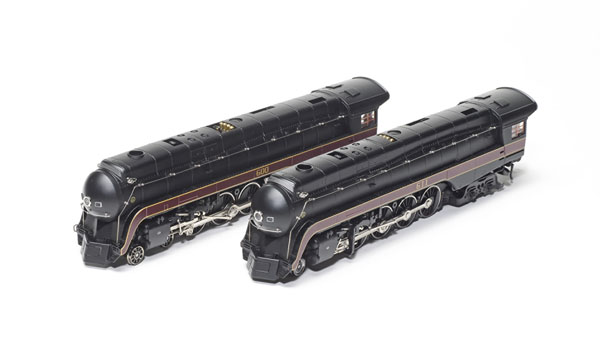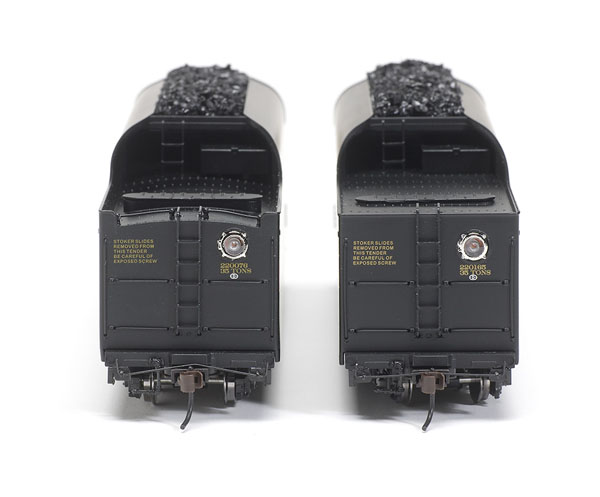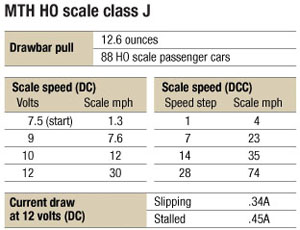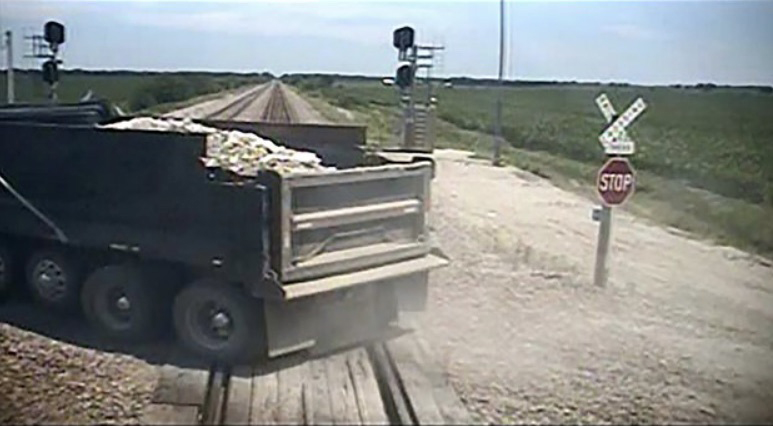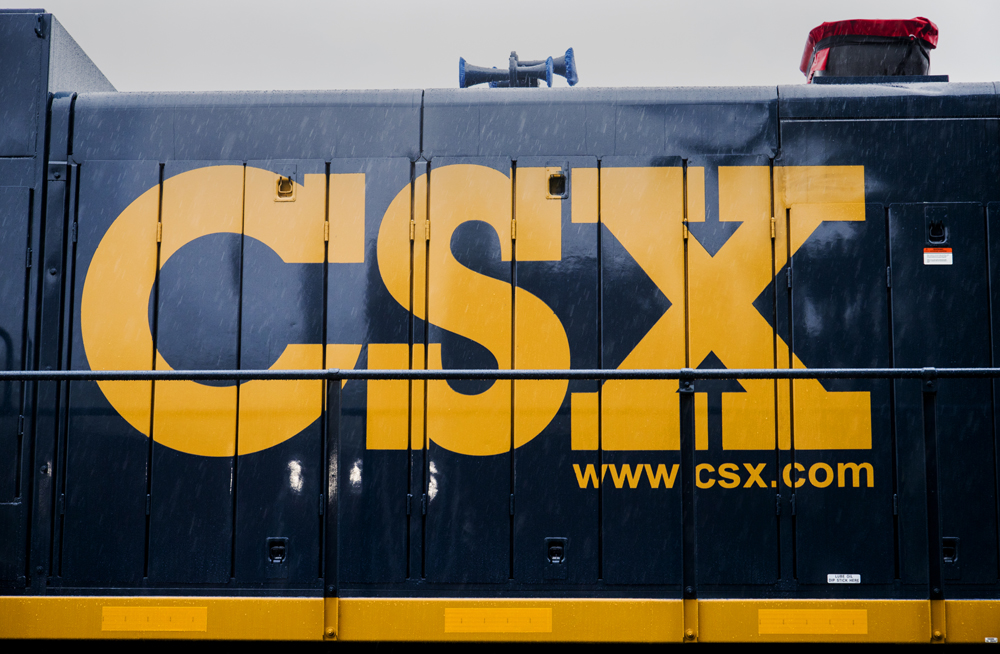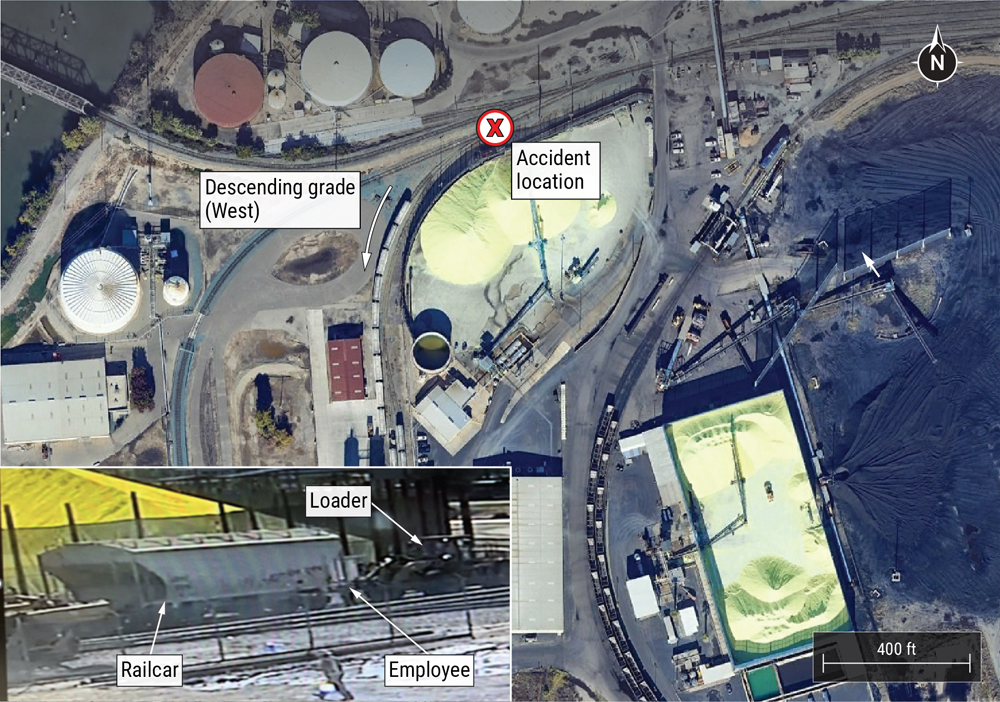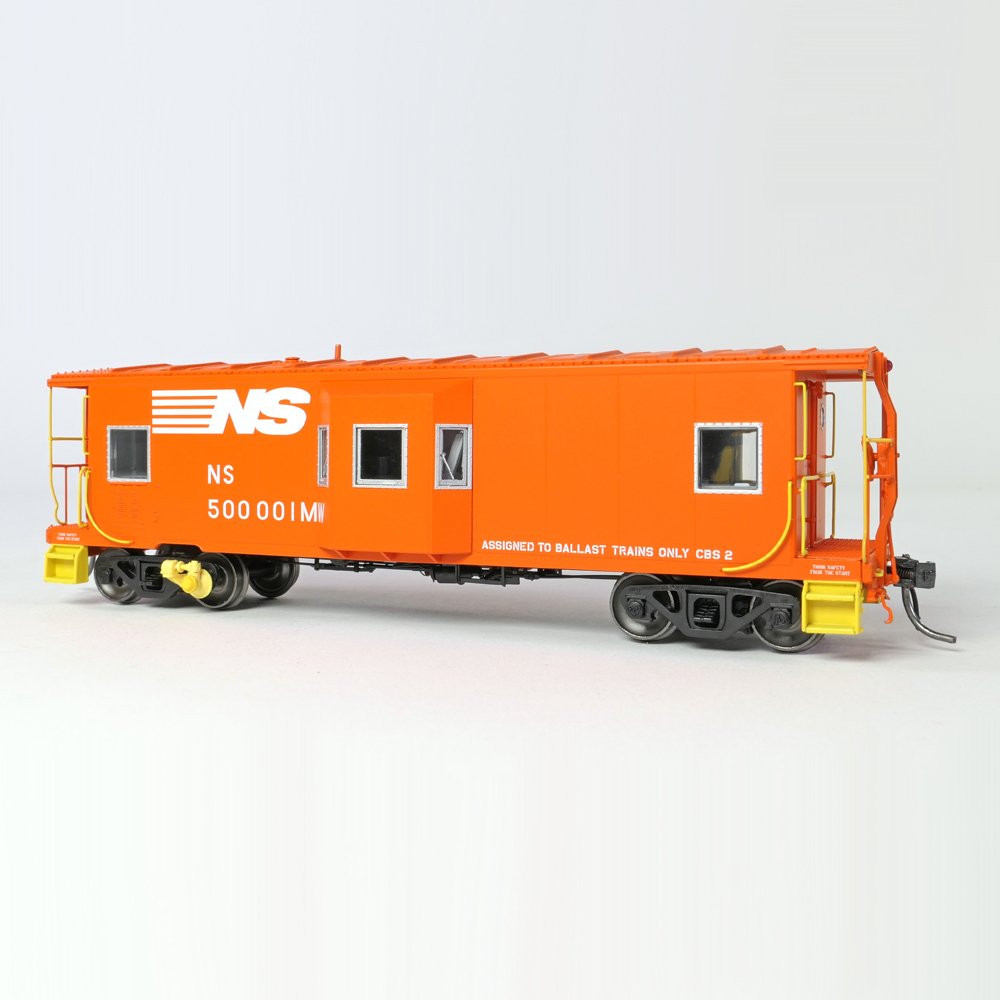Prototype. Norfolk & Western’s Roanoke Shops built the first five class J locomotives (nos. 600-604) in 1941. They built six more (nos. 605-610) without streamlining in 1943, designating them class J-1. After World War II these engines were streamlined and re-designated class J. The last three Js (nos. 611-613) were built in 1950 and were the last 4-8-4 Northern-type steamers built in the United States.
Averaging 15,000 service miles per month, the streamlined 4-8-4s hauled the N&W’s Pocahontas and Powhatan Arrow during the postwar years. By the late 1950s diesels took over passenger duties on the N&W, and many class J engines were relegated to freight service. By 1959, the railroad retired all of the Js.
From 1982 until 1994, class J no. 611 led excursion trains as part of N&W-successor Norfolk Southern’s steam program. After NS discontinued the program it donated no. 611 to the Virginia Museum of Transportation, where it’s still on display.
Appearance. Almost all of the dimensions of the M.T.H. model match prototype drawings in The Model Railroader Cyclopedia Vol. 1: Steam Locomotives (Kalmbach Publishing Co.). The gap between the locomotive and tender is about two HO scale feet longer than the prototype, which allows the M.T.H. class J to negotiate 18″ curves.
The M.T.H. class J engines are built primarily of die-cast metal. The molded detail matches prototype photos and drawings.
Separately applied parts include the handrails and throttle linkage. As on the prototype, there are openings on top of the model’s streamlined boiler for the whistle, safety valves, Nathan low-water alarm, and check valves. The solid pilot has a swing-out scale-size non-functioning coupler, which can be replaced with an included operating coupler. The no. 600 also has a bell in front of the safety valves.
The cab interior has an impressive amount of detail, including painted gauges and valves on the backhead, green-painted cab walls and ceiling, window glazing, and positionable roof vents. Painted engineer and fireman figures are also included.
The locomotive and tender are painted satin black. The widths and placement of the Tuscan Red stripes and the gold pinstripes and lettering match the prototype.
The window sash is correctly painted a light shade of red. The handrails and stanchions, as well as the headlight and classification light housings, are plated steel.
The only painting discrepancy I found on either model was on no. 600. The topmost louver on the front of the boiler top casting was unpainted. All five of these louvers should be silver.
The plated metal bell is located under the left front pilot step on no. 611. The bell was moved to this location on all class J locomotives beginning in 1953.
Mechanism. A can motor with a brass flywheel is inside the model’s boiler. A dogbone-style driveshaft transfers power from the motor to a gearbox on the third driver axle, and both third drivers have traction tires. Siderods transfer power to the other drivers. As on the prototype, the M.T.H. class J has tandem main rods.
There is a single downward-facing speaker in the tender. One of my favorite features of M.T.H. HO scale steamers is the wireless drawbar connection between the locomotive and tender. A smoke unit on/off switch and a master volume control are under the tender’s water hatch.
In DCC and DCS modes the model accelerated to 74 scale mph. Prototype class J no. 610 reached 110 mph during a 1944 test.
Using an M.T.H. DCS Commander, I had the model moving in speed step 1 at 1 scale mph. Using an NCE Powercab DCC system, the class J’s slow speed performance is smoother with 128 speed steps than with 28 speed steps. The model crept forward in speed step 1 at less than 1 scale mph.
Realistic effects. On DC, the model’s lights, sounds, and smoke are limited to automatic effects. The sound of four chuffs per wheel revolution is synchronized to the motion of the drivers and the puffs of the smoke unit. Brakes squealed when I rapidly decreased the throttle. At rest, sounds such as the air pump play randomly.
The model has many more user-controlled effects when it’s run on a DCC- or DCS-equipped layout. The deep “steamboat” whistle sounds like recordings that I’ve heard of the prototype no. 611. On a DCS layout you can “quill” the whistle using the controller’s thumbwheel.
The 28 DCC functions include pulling out the coupler slack and a series of passenger announcements specific to the Powhatan Arrow.
The M.T.H. model has 10 configuration variables (CVs), which allows an operator a limited amount of fine-tuning to the engine’s performance. I changed the long address to the locomotive number without any difficulty.
All the sound effects and smoke really bring this excellent-looking model to life. The attention to detail shown on the model is sure to please fans of this famous steamer.
Price: $449.95
Manufacturer
M.T.H. Electric Trains
7020 Columbia Gateway Dr.
Columbia, MD 21046-1532
www.mthhotrains.com
Road numbers: (all Norfolk & Western) Early 1941 version: nos. 600, 603, 604. Late 1950 version: nos. 611, 612, 613
Era: Early version, 1941 to early 1950s. Late version: 1953 to 1959. (no. 611, to 1994)
Features
Automatically switches between DC, Digital Command Control, and MTH Digital Command System modes
Constant-voltage headlight
Electrical pickup on four drivers and all tender wheels
Engine and tender weight: 2 pounds 13.5 ounces
Fan-driven smoke unit
Five-pole skew-wound motor with brass flywheel
Metal RP-25 contour wheelsets in gauge
Minimum radius: 18″
MTH Proto-Sound 3.0 system operates on DC, DCC, or DCS
Operating classification lights
Optional drivers without traction tires
Sprung drivers
User-installed magnetic knuckle couplers at correct height





